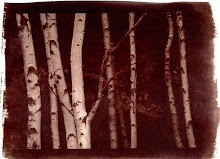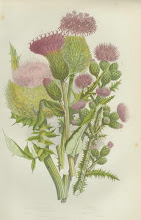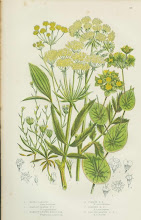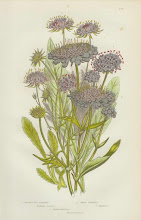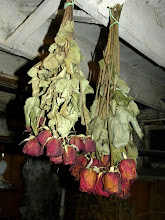
I love to smudge and frequently use smoke in purifying rituals, both Native American and pagan rites alike. While using a store bought smudge stick or incense is perfectly fine, there's something much more potent, much more magickal about using your own homemade smudge stick as well as your own ground smudging incense. You can make a smudge bundle as large as you want it to be, or as small (providing you are able to control the stick and not start a fire with it). Likewise for the incense: to ensure freshness and potency, make only as much as you'll need for any given ritual: be it cleansing your home, a new ritual tool, or for a purification rite both in or out of circle.
What you'll need for the smudge bundle:
dried white sage (sagebrush), twigs with leaves attached
dried lavender, stems with flower buds attached
dried cedar, small twigs (juniper can be substituted)
cotton thread such as embroidery floss, 3-4 times the length of your bundle and in one or multiple colors that speak to you
Cut your twigs 7-10 inches in length. Grab a handful and hold them firmly together without breaking them. Grasp them from their base, upside down and wind your thread around the base a couple of times, with a few extra inches of thread left hanging loose. Begin to gently but firmly wrap the thread up the length of your smudge stick until you reach the tip, then switch direction and begin to wrap your way back down to the base of the bundle. Securely tie the end you left dangling to this end of the thread and snip any excess.
What you'll need for the ground smudging incense:
dried lavender buds and flowers
dried wormwood
dried sage leaves
a mortar and pestle
a heat proof bowl or dish (preferably earthen)
a charcoal block
You can use the herbs in equal amounts, or you can add a bit more lavender if you'd like to bring an increased sense of calm to your ritual (not to mention how lovely lavender smells), or more sage if you wish to ramp up the protective properties of this incense. Regardless of your choice of proportion, you'll want to grind the herbs somewhat. While they needn't be ground into a super fine powder, they shouldn't be left terribly coarse and twiggy. The wormwood will require a bit more effort to grind. You want your herbs to smolder nicely on your charcoal, with smoke curling gently in the air around you, and not smother the charcoal block.
Both of these incenses are wonderful. The bundle makes smudging on the move easier to manage while the ground incense is perfect for a quieter ritual in circle. Both offer powerful protection and purification.
Please note that cedar is poisonous and should not be taken internally so be sure to wash your hands well after handling it. White sage and wormwood are poisonous in large doses, should not be taken internally when pregnant and/or nursing and like cedar, care should be taken when handling them. And obviously, if you are allergic to any of these herbs or woods, please use common sense and don't use them!
Photo courtesy of tsallam on flickr.






































